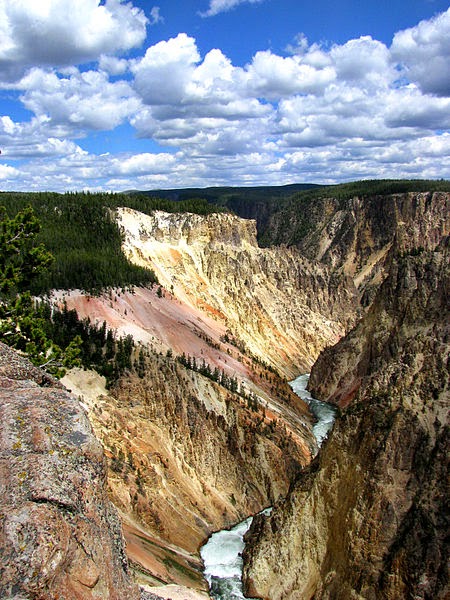
Yellowstone National Park are fighting viral rumors of an impending, cataclysmic eruption of a mega volcano slumbering at the US Western preserve known for its geothermal features.
Volcanologists said reams of geological data have given them a deep of understanding of the Yellowstone Caldera—and all signs point to calm.
Over the past several weeks, the Internet has been abuzz with speculation over worrying signs suggesting an explosive awakening for the so-called supervolcano, whose last catastrophic eruption was 640,000 years ago.
That eruption covered a good portion of North America in ash several inches (centimeters) thick, and had a long-lasting impact on the Earth’s climate.
A video showing a herd of bison fleeing the iconic Wyoming park went viral.
And several days later, a 4.8-magnitude earthquake, the strongest in three decades, fed the rumor mill still further.
But Yellowstone spokesman Al Nash said there was nothing out of the ordinary in the animals’ behavior.
“We do have bison, elk and other animals that have moved out of the park recently,” he said.
“They tend to migrate at this time… to lower elevations, where they think they can get food, and then they come back.”
No cause for fear
As for the quake: “It was the strongest in 30 years, but it was not that strong,” said Peter Cervelli, a volcano expert at the US Geological Survey.
And such jolts are not exactly rare, with an estimated 1,000 to 3,000 quakes a year at the park.
Like many similar volcanoes in the world, Yellowstone’s has a way of breathing, the magma trapped underneath lifting or subsiding in phases.
And because the earth’s crust is just four to six miles (six to 10 kilometers) thick at Yellowstone, compared to an average of 18 miles, any pressure exerted by the magma is felt strongly.
“Recently, over the last six months, we are in an episode of uplift,” Cervelli said. “This probably explains the recent earthquake.”
But he rebuffed rumors that a big eruption was coming.
“I have not made yet an observation at Yellowstone that causes me to be afraid or causes me to wonder if an eruption was coming,” Cervelli said.
“We are always prepared to be surprised, and we don’t claim to understand everything perfectly.”
But he predicted there won’t be another major eruption “for the next ten thousands of years.”
His confidence was based in part on the many instruments, including dozens of GPS receivers and seismometers, that monitor activity in the volcano whose giant magma chamber measures 55 miles long, 18 miles wide and nine miles deep.
Around a dozen experts are also permanently stationed at Yellowstone.
Asteroid strike more likely
Geologist Ilya Bindeman was equally confident, based on his isotopic analysis of the minerals in the volcanic rocks at Yellowstone.
“We know the behavior of the past, and we know at what comparative stage Yellowstone is right now,” the University of Oregon professor explained.
And based on that analysis, the volcano is in the process of dying out.
“Caldera cycles go on for maybe several million years, and then it is done,” he said.
“I don’t think another major eruption is going to happen anytime soon—at least not for another one million to two million years.”
Such an eruption would destroy everything within a radius of several hundred miles and would cover North America in ash, putting an end to agriculture and cooling the Earth’s climate for at least 10 years.
The last time the Earth experienced such an eruption was in Indonesia, 70,000 years ago.
But the experts were in agreement: it’s nothing we will see during our lifetimes.
“We are more likely to see a major asteroid impact,” Cervelli said.
Note : The above story is based on materials provided by © 2014 AFP









